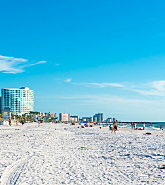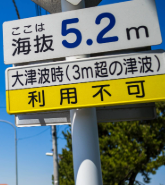Thunder is the noise made by the phenomenon of lightning. It was only in the mid 20th Century that we learned why lightning is so noisy. Even Aristotle thought thunder was caused by clouds bumping into one another. We now know that thunder is generated by the supersonic thermal expansion of air, as the electrical charge arcs through the atmosphere.
Like thunder, the earthquake is also a noise; it is so low pitched that it is almost inaudible, but so loud that it can cause buildings to shake themselves to bits. So what is the name of the phenomenon that produces this quaking noise?
We tend to lazily call it the “earthquake,” but that is as wrong as calling lightning “thunder.” We need a distinct word to describe the source of earthquake vibrations, equivalent to lightning being the cause of thunder. We need a word to describe earthquake’s “lightning.”
Like a spontaneously firing crossbow, the Earth’s crust is slowly loaded with strain and then suddenly discharged into fault displacement. Since 2000 we have become better at observing the two halves of the process.
One half concerns the sudden release of strain accumulated during hundreds or thousands of years over a large volume of the crust. We can now observe this strain release from continuous GPS measurements or from inter-ferometric analysis of synthetic aperture radar images.
The second half of the process is the distribution of displacement along the fault, which can now be reconstructed by inverting the full signature of vibrations at each seismic recorder.
Focusing on the earthquake vibrations means that we forget all the other consequences of the regional strain release.
For example, hot springs stopped across the whole of northern Japan following the 2011 Tohoku earthquake because the extensional release of compressional strain diverted the water to fill up all the cracks. In the elastic rebound of prolonged extension, half a cubic kilometer of water was squeezed out of the crust over nine months in the region around the last big extensional fault earthquake in the US in Idaho in 1983.
Sudden strain can cause significant land level changes; the city of Valdivia sunk 8 feet in the 1960 Chile earthquake, while Montague Island off the coast of Alaska rose 30 feet in the 1964 Great Alaska earthquake. Whether your building plot is now below sea level or your dock is high out of the sea, land level changes can themselves be a big source of loss.
Then, there are the tsunamis generated by all the regional changes in seafloor elevation due to earthquakes. In the 2011 Tohoku Japan earthquake, it was the subsequent tsunami contributed almost half the damage and almost all of the casualties.
So, what is the name of earthquake’s “lightning?” “Elastic rebound” describes one half of the process and “fault rupture” the other half. But no word combines the two. A word combining the two would have to mean “the sudden transformation of stored strain into fault displacement.” We could have called the origin of thunder “the sudden discharge of electrical charge between the ground and clouds,” but “lightning” slips more easily off the tongue.
There could be a competition to coin a new word to describe the earthquake generation process. Perhaps “strainburst,” “faultspring,” or, as the underground equivalent of lightning, “darkning.” We are scientifically bereft without a word for earthquake’s “lightning.”






